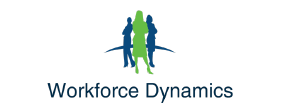Aishwarya Rai’s Leadership Lesson for Tech & Business
7 min read
Group of business people with alphabets signs forming the word Culture on table. Top view of business people discussing over work culture in a meeting.
The modern workforce, a rich tapestry woven from diverse generations, often seeks an ideal blueprint for fostering collaboration and innovation. Surprisingly, a profound lesson in inclusive leadership workplace culture can be gleaned not from a corporate boardroom, but from a heartwarming anecdote shared by Bollywood star Ranbir Kapoor. Kapoor recently recounted his experience on the sets of ‘Aa Ab Laut Chalen’ as a young teenager, expressing admiration for how Aishwarya Rai Bachchan treated him as a peer and colleague, rather than just the director’s kid. This seemingly simple act of respect, transcending age and perceived status, offers a powerful metaphor for the kind of inclusive leadership vital for today’s dynamic business and tech environments.
The Shifting Sands of the Modern Workforce
Today’s workplaces are unprecedented in their generational diversity. For the first time, four or even five distinct generations—from seasoned Baby Boomers and pragmatic Gen Xers to digitally native Millennials and Gen Zs—are collaborating side-by-side. Each generation brings a unique set of values, communication styles, work ethics, and technological proficiencies. While this diversity is a tremendous asset, offering a vast reservoir of experience, fresh perspectives, and adaptability, it also presents complex challenges. Traditional hierarchical structures and one-size-fits-all management approaches often falter in such varied environments, leading to communication breakdowns, perceived biases, and missed opportunities for synergy. The imperative for leaders is no longer merely to manage this diversity, but to actively cultivate an inclusive leadership workplace culture that harnesses the full potential of every individual, regardless of their age or background.
In this evolving landscape, the very definition of ‘colleague’ is expanding. Just as Aishwarya Rai saw Ranbir Kapoor as a contributing member of the team despite his youth and informal role, modern leaders must cultivate a mindset that values potential and contribution over age-based assumptions. This requires a conscious effort to dismantle implicit biases and foster environments where every voice feels heard and valued. The current economic climate, coupled with rapid technological advancements, further accentuates the need for agility and collective intelligence. Companies that fail to adapt their leadership styles risk stagnation, high turnover rates, and a significant competitive disadvantage. Therefore, understanding and implementing inclusive leadership is not just a moral good, but a strategic imperative for sustained success.
Beyond Age: Cultivating True Collaboration
Aishwarya Rai’s approach to young Ranbir Kapoor exemplifies key tenets of effective inclusive leadership workplace culture. By treating him with respect and engaging him in discussions as she would senior colleagues, she demonstrated an understanding that valuable input isn’t exclusive to experience or seniority. This breaks down artificial barriers and fosters psychological safety, allowing individuals to contribute authentically. In corporate settings, this translates into actionable strategies:
- Intentional Cross-Generational Mentorship: Beyond traditional top-down mentorship, organizations are increasingly embracing reverse mentorship, where younger employees guide older colleagues on digital tools, social media, and emerging trends. This mutual learning fosters respect and bridges knowledge gaps.
- Empathetic Communication Training: Recognizing that different generations have distinct communication preferences (e.g., email vs. instant messaging vs. face-to-face), leaders must encourage adaptability and provide training on effective, empathetic cross-generational communication.
- Flexible Work Arrangements: Inclusive cultures acknowledge diverse needs. Offering flexible hours, remote work options, or varied benefit packages can cater to the differing life stages and priorities of employees across generations, promoting work-life integration rather than just work-life balance.
- Skill-Based Development: Instead of pigeonholing individuals by age, focus on skill development and deployment. Providing equal opportunities for training and upskilling ensures that all employees feel invested in and capable of contributing to new challenges.
- Celebrating Diverse Perspectives: Leaders must actively solicit and amplify diverse viewpoints in problem-solving and decision-making processes. Creating forums where different generational insights are explicitly valued and integrated leads to more robust solutions and a stronger sense of belonging.
These developments signify a shift from merely tolerating differences to actively leveraging them for collective benefit. Companies like Google and Microsoft, for instance, have invested heavily in programs designed to foster cross-generational collaboration, recognizing its direct correlation with innovation and employee satisfaction.
The Tangible Benefits for Businesses and International Talent
The establishment of a robust inclusive leadership workplace culture yields a multitude of tangible benefits, impacting both organizational performance and the integration of diverse talent, especially international students and professionals. For businesses, the advantages are clear: enhanced innovation, as diverse perspectives challenge conventional thinking and spark creativity; improved problem-solving, with a wider range of experiences leading to more comprehensive solutions; and higher employee retention, as individuals feel valued, respected, and motivated to contribute long-term. Research by Deloitte found that inclusive organizations are twice as likely to meet or exceed financial targets, three times more likely to be high-performing, and six times more likely to be innovative and agile. Moreover, such cultures cultivate a strong employer brand, making the company an attractive destination for top talent globally.
For international students and those seeking global careers, understanding and identifying an inclusive workplace culture is paramount. Entering a new country and professional environment already presents challenges like cultural adjustment, language barriers, and navigating unfamiliar social norms. An inclusive environment, much like Aishwarya Rai’s welcoming approach, significantly eases this transition. It ensures that international talent, irrespective of their age, origin, or prior experience, is seen as a valuable asset rather than an outsider. This leads to:
- Faster Integration: When leaders actively foster an environment of respect and open communication, international students can more quickly adapt to local work practices and feel part of the team.
- Reduced Culture Shock: Inclusive cultures often provide explicit support mechanisms and a culture of empathy, mitigating the isolating effects of culture shock.
- Enhanced Contribution: Feeling valued and included empowers international professionals to confidently share their unique global perspectives, which can be invaluable for companies operating in diverse markets.
- Career Growth: Fair treatment and equal opportunities for development, regardless of background, ensure that meritocracy prevails, allowing international talent to advance based on their skills and performance.
Being prepared for and actively seeking out such workplaces is a critical aspect of a successful international career. It moves beyond merely securing a visa to building a fulfilling and impactful professional life abroad.
Expert Insights and Practical Tips
Cultivating an inclusive leadership workplace culture requires a proactive and continuous effort from all levels of an organization. Industry experts emphasize several key strategies for leaders and aspiring professionals alike:
For Leaders:
- Practice Active Listening: Truly hear and understand the perspectives of employees from different generations. Create regular feedback channels and act on the insights gained.
- Challenge Assumptions: Be aware of and actively question age-related stereotypes. Focus on individual capabilities and contributions rather than making broad generational generalizations.
- Promote Intergenerational Dialogue: Organize workshops, informal coffee meetings, or project teams specifically designed to bring different generations together to share knowledge and experiences.
- Model Inclusive Behavior: Leaders must visibly demonstrate respect, empathy, and openness to new ideas from all team members. Your actions speak louder than policies.
- Invest in Diversity & Inclusion Training: Provide ongoing training to help managers and employees understand unconscious biases and develop skills for effective cross-cultural and cross-generational collaboration.
As HR consultant Dr. Priya Sharma states, “The most effective leaders today are those who can fluidly adapt their style to connect with a 22-year-old Gen Z intern and a 55-year-old Baby Boomer executive, making both feel equally empowered and respected. It’s about seeing the person, not the generation.”
For Aspiring Professionals and International Students:
- Be Proactive in Learning: Seek out opportunities to learn from colleagues of all ages. Offer your unique skills (e.g., digital proficiency for younger generations, global perspectives for international students) while being open to gaining traditional wisdom.
- Develop Adaptable Communication Skills: Learn to tailor your communication style to your audience. Be clear, concise, and open to using various channels. Don’t assume everyone prefers the same method of interaction.
- Embrace Continuous Learning: The modern workplace demands lifelong learning. Stay curious about new technologies, industry trends, and different ways of working.
- Highlight Your Unique Value Proposition: International students, in particular, bring invaluable global perspectives, language skills, and cross-cultural understanding. Articulate how these unique attributes can benefit the organization.
- Seek Feedback and Be Open to Growth: A humble and growth-oriented mindset is crucial for navigating any new professional environment. Actively ask for feedback and demonstrate a willingness to learn and improve.
By adopting these strategies, individuals can not only thrive in diverse workplaces but also actively contribute to shaping a more inclusive and collaborative environment.
Looking Ahead: The Future of Work is Collaborative and Inclusive
The trends point unequivocally towards an increasing integration of diverse generations in the workforce. As technological acceleration continues and global mobility becomes more common, the need for robust inclusive leadership workplace culture will only intensify. Companies that prioritize these values will not only attract the best talent but will also be better equipped to innovate, adapt, and succeed in an increasingly complex global economy. The lessons from a film set, where an established star extended respect and camaraderie to a young, inexperienced individual, serve as a timeless reminder: true leadership transcends age, background, and perceived status. It’s about recognizing and nurturing the potential in every person, fostering an environment where all can contribute and flourish. The future of work is not just about technology or efficiency; it is fundamentally about human connection and collaboration across all divides.
Reach out to us for personalized consultation based on your specific requirements.



